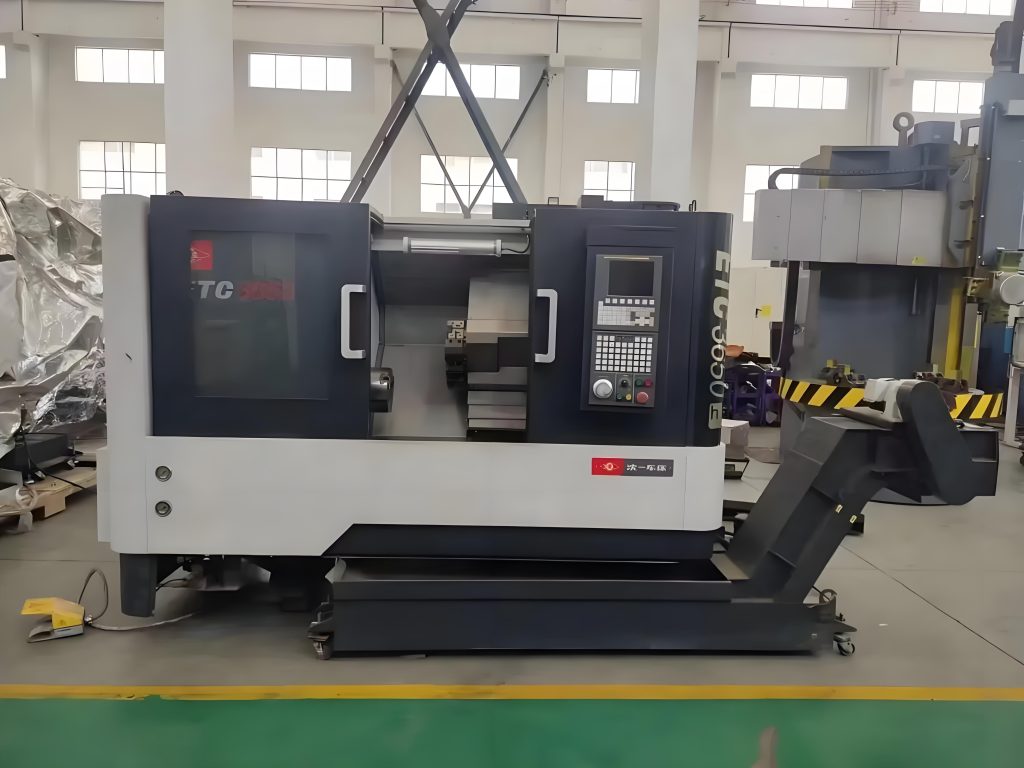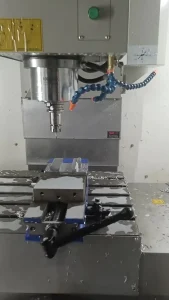1. 介绍
数控系统 (计算机数控) turning is a fundamental manufacturing process that utilizes computer-controlled machines to shape and form workpieces, typically cylindrical in nature. The success of CNC turning operations heavily depends on accurate and efficient programming. This article will delve into the basics of CNC turning programming, covering essential concepts, commands, and techniques. 此外, it will highlight the CNC machining services provided by rapidefficient, a renowned name in the industry.
2. Understanding the CNC Lathe
Before diving into programming, it is crucial to have a clear understanding of the CNC lathe itself. A CNC lathe consists of several key components. The spindle is responsible for rotating the workpiece at a specified speed, usually measured in revolutions per minute (转速). The turret holds the cutting tools and can be indexed to bring different tools into the cutting position. The bed provides a stable platform for the movement of the carriage and cross-slide, which control the position of the cutting tool relative to the workpiece.
The CNC lathe operates based on the Cartesian coordinate system. The X-axis controls the radial movement of the cutting tool (towards or away from the center of the workpiece), while the Z-axis controls the longitudinal movement (along the length of the workpiece). Understanding these axes and their movements is essential for programming accurate tool paths.

3. CNC Turning Programming Languages
The most commonly used programming language for CNC turning is G-code. G-code is a set of alphanumeric instructions that tell the CNC machine what actions to perform. Each G-code command has a specific function, such as rapid positioning (G00), linear interpolation (G01), circular interpolation (G02 and G03), and tool selection (时间).
例如, the G00 command is used to quickly move the cutting tool to a specific position without cutting. The syntax might be something like “G00 X10.0 Z5.0”, which would move the tool to the X-coordinate of 10.0 and the Z-coordinate of 5.0 at a rapid speed. The G01 command, 另一方面, is used for linear cutting. A typical G01 command could be “G01 X20.0 Z-10.0 F0.2”, where the tool moves linearly from its current position to X = 20.0 and Z = – 10.0 at a feed rate of 0.2 units per minute.
In addition to G-code, some CNC machines also support M-code, which is used for machine control functions such as starting and stopping the spindle (M03 and M05), turning the coolant on and off (M08 and M09), and program end (M02 or M30).
4. 工具选择和设置
Proper tool selection is vital in CNC turning programming. Different cutting tools are designed for specific operations, such as rough turning, finish turning, grooving, and threading. 工具几何形状, 材料, and coating all play a role in determining the tool’s performance and suitability for a particular job.
When programming, the tool must be selected and set up correctly. This involves specifying the tool number (using the T command) and its offset values. Tool offsets account for the physical dimensions and position of the tool in the turret. 例如, if a tool has a certain length and radius, the offset values are entered into the CNC control to ensure accurate cutting. The G43 and G44 commands are often used for tool length compensation, allowing the programmer to adjust for differences in tool lengths.
5. Programming the Tool Path
The tool path is the sequence of movements that the cutting tool makes to shape the workpiece. It is determined by the geometry of the part to be machined. For a simple cylindrical part, the tool path might involve rough turning the outer diameter, followed by finish turning to achieve the desired surface finish and dimensional accuracy.
When programming the tool path, considerations such as cutting speed, 进给率, and depth of cut must be taken into account. 切割速度 (determined by the spindle RPM) affects the tool life and the quality of the surface finish. The feed rate (the rate at which the tool advances along the workpiece) and depth of cut determine the material removal rate. These parameters are typically set based on the material being machined (例如。, 铝, 钢, 等), the tool type, and the desired quality and productivity.
例如, when rough turning a steel workpiece, a lower cutting speed and a relatively large depth of cut and feed rate might be used to remove material quickly. For finish turning, a higher cutting speed and a smaller feed rate are employed to achieve a smooth surface finish. Circular interpolation commands (G02 and G03) are used when machining arcs or circular features on the workpiece.
6. Subprograms and Macros
To make CNC turning programming more efficient and organized, subprograms and macros can be utilized. A subprogram is a separate block of code that can be called and executed multiple times within the main program. This is useful for repetitive operations, such as machining multiple identical features on a workpiece. 例如, if a part has several grooves of the same size and shape, a subprogram can be created to machine one groove, and then the subprogram can be called as many times as needed.
Macros, 另一方面, are more powerful and flexible. They allow the programmer to create custom commands or functions that can be used within the program. Macros can accept variables, which means that the same macro can be used for different values or parameters. This can significantly reduce programming time and complexity, especially for complex parts with similar features but varying dimensions.
7. Error Handling and Debugging
Even with careful programming, errors can occur in CNC turning operations. These errors can range from syntax errors in the G-code to incorrect tool paths or machine setup issues. It is essential to have a process for error handling and debugging.
Most CNC machines have diagnostic features that can provide information about errors. Programmers need to be able to interpret these error messages and make the necessary corrections. This might involve checking the G-code for incorrect commands, verifying tool offsets, or ensuring that the machine is properly calibrated. Simulation software can also be used to preview the tool path and detect potential errors before the actual machining takes place.
8. rapidefficient’s CNC Machining Services
8.1 Advanced Programming Capabilities
rapidefficient employs highly skilled programmers who are proficient in CNC turning programming. They have extensive experience in writing complex G-code programs, utilizing subprograms and macros to optimize the machining process. Whether it’s a simple cylindrical part or a highly intricate component, rapidefficient’s programmers can create accurate and efficient tool paths.
8.2 High-Quality Equipment
The company is equipped with state-of-the-art CNC lathes. These machines have high precision spindles, advanced tool turrets, and reliable control systems. The lathes are capable of handling a wide range of workpiece sizes and materials, ensuring that any CNC turning project can be executed with the utmost accuracy and quality. The equipment is regularly maintained and updated to keep up with the latest technological advancements.
8.3 Customization and Prototyping
rapidefficient offers customization services for CNC turned parts. They can work closely with customers from the design stage, providing valuable input on manufacturability and optimization. Whether it’s a one-off prototype or a small batch production, rapidefficient can turn your ideas into reality. Their ability to quickly produce prototypes allows customers to test and refine their designs before full-scale production.
8.4 质量保证
A strict quality assurance process is in place at rapidefficient. Each CNC turned part is inspected using advanced metrology equipment such as coordinate measuring machines (三坐标测量机). This ensures that the parts meet the specified tolerances and quality standards. Any deviations are identified and corrected promptly, guaranteeing that only top-quality parts are delivered to customers.
8.5 Competitive Pricing and Timely Delivery
Despite offering high-quality CNC machining services, rapidefficient provides competitive pricing. They optimize their production processes and manage costs effectively to offer cost-effective solutions. 此外, they understand the importance of timely delivery and strive to meet or exceed customer deadlines. This makes rapidefficient a reliable partner for all CNC turning needs.
9. 结论
CNC turning programming is a complex yet essential aspect of modern manufacturing. Understanding the basics of CNC lathes, programming languages, tool selection and setup, tool path programming, and error handling is crucial for successful CNC turning operations. rapidefficient stands out as a leading CNC machining service provider, offering advanced programming capabilities, high-quality equipment, customization services, strict quality assurance, competitive pricing, 和及时的交货. Whether you are in the automotive, 航天, or any other industry requiring precision CNC turned parts, rapidefficient is the ideal choice to ensure your projects are completed with the highest level of quality and efficiency.






